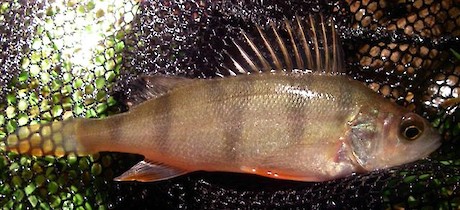 Perch. Photo: Amber McEwan.New Zealand indigenous freshwater ecosystems have suffered from human mediated introductions of exotic species in the same way as terrestrial systems.
Perch. Photo: Amber McEwan.New Zealand indigenous freshwater ecosystems have suffered from human mediated introductions of exotic species in the same way as terrestrial systems.
Attempts to create a mini England in the southern hemisphere drastically and irrevocably changed the New Zealand waterscape through the importation and release of exotic species for food, angling and attempted biological control. While the vast majority of this damage was done in the 1800s, the past 30 years or so has seen a resurgence of illegal spreading of alien fishes (koi carp, perch, rudd and tench) by anglers to a pond or stream convenient to them.
Today, New Zealand waterways are home to at least 21 species of introduced fish. Some pose a significant threat to indigenous freshwater ecosystems such as:
- Koi carp
- Rudd
- Tench
- Perch
- Mosquito fish (Gambusia)
- Catfish
Exotic fish cause direct damage through predating on, and competing with, native species, as well as causing indirect ecosystem damage in a variety of ways such as disrupting aquatic food webs, increasing nutrient levels, re-suspending fine sediments, and promoting the spread of algal blooms.
Freshwater ecosystems are especially vulnerable to invasion by pest fish because it is initially hard to detect them until they have reached levels where their control is difficult. Once exotic fish have invaded a waterway and become established it is very difficult to remove them and those control and eradication measures that are available can have serious impacts on indigenous aquatic flora and fauna.
For more information go to:
- Pest fish (DOC)
- Exotic fish (NIWA website)
